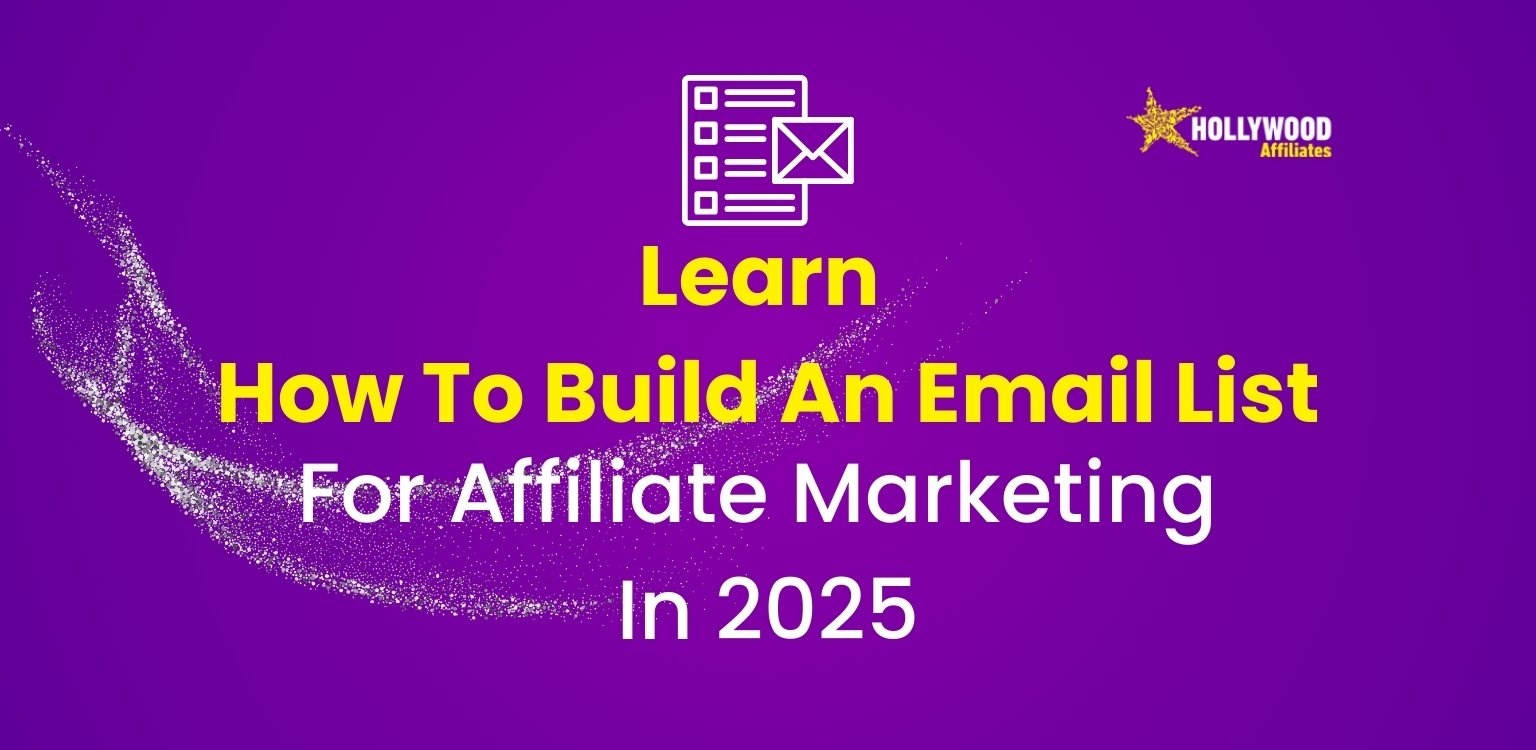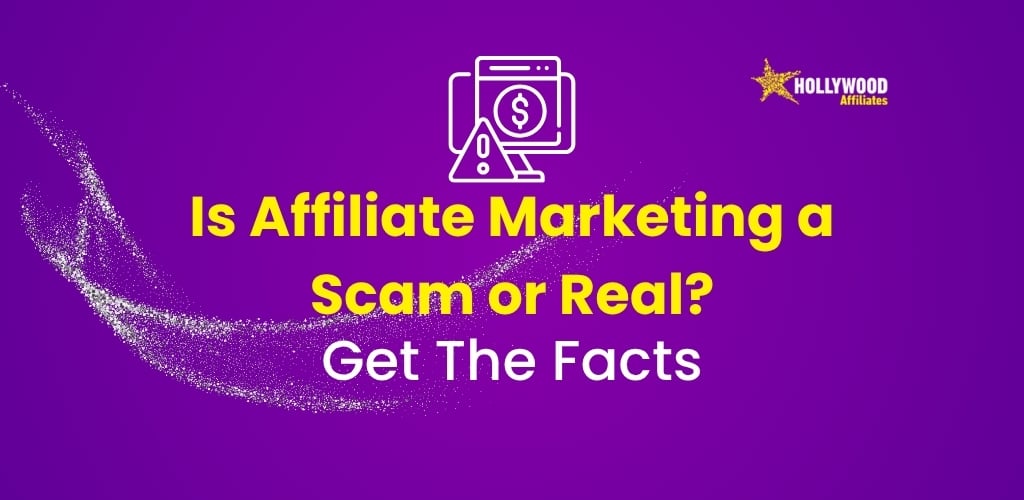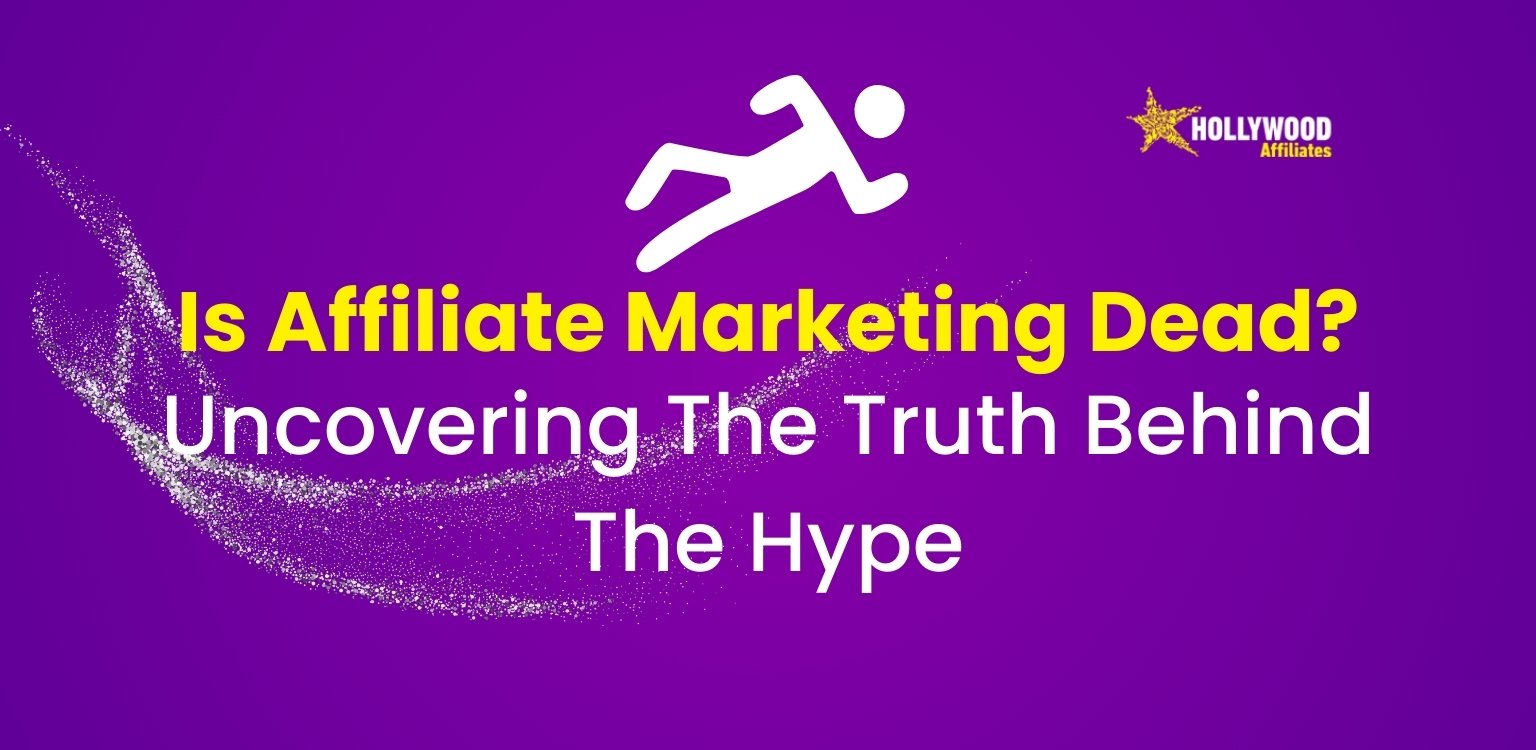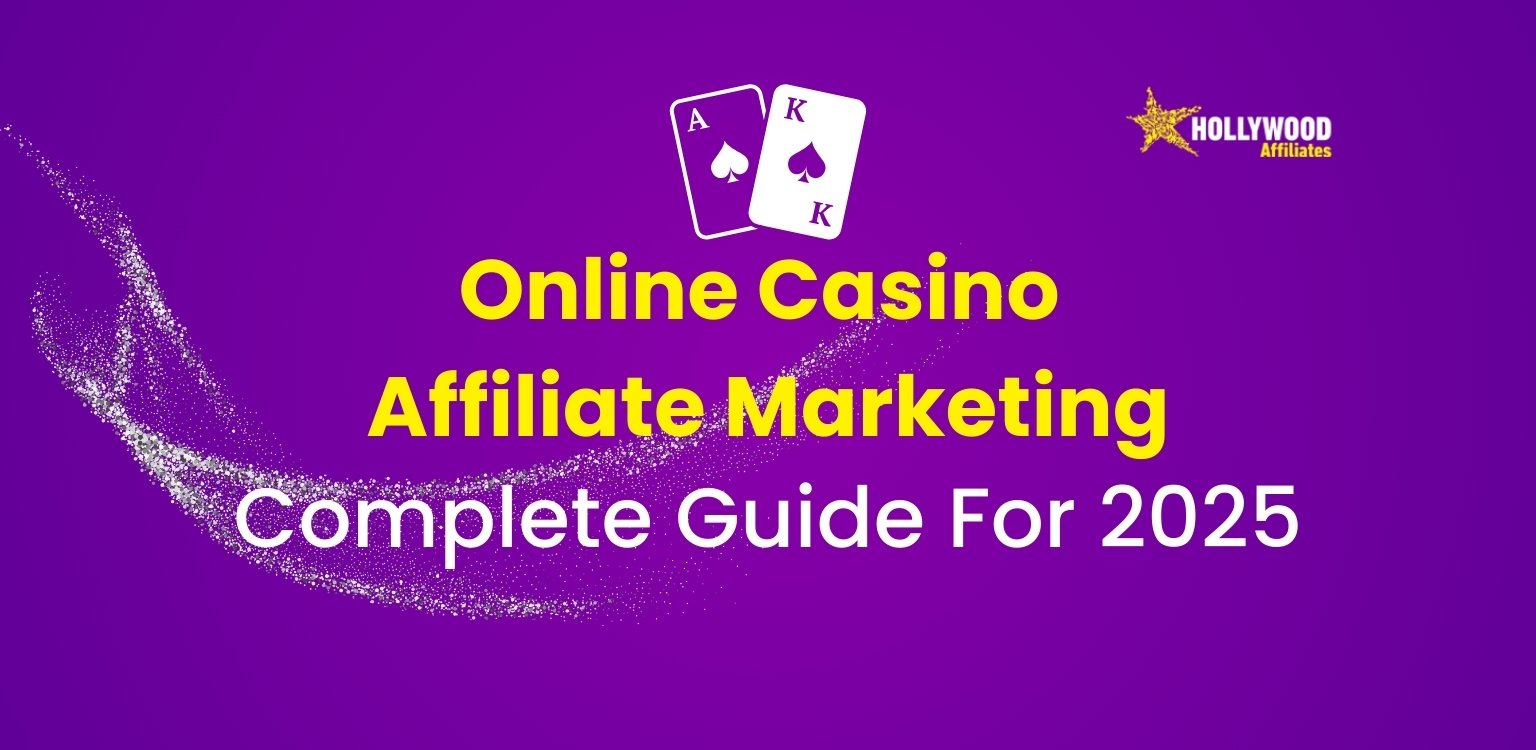Learn How to Build an Email List for Affiliate Marketing that Gains and Retains Subscribers in 2025

Table of Contents
How to Build an Email List for Affiliate Marketing
Email marketing remains one of the affiliate marketer’s most powerful tools, generating a staggering ROI of $36 for every $1 spent, according to recent industry figures.
While social media trends and sites themselves are short-lived, and an algorithm change can destroy your traffic overnight, your email list is yours to keep, and you have complete control over it.
But how exactly do you go about building an email list for your affiliate marketing strategy? Let’s dive into the strategies that work in 2025 and how you can leverage them to grow your affiliate business.
1. Build High-Value Lead Magnets Your Audience Won’t Be Able to Resist
The secret to any successful email list-building campaign is giving something of value that individuals will gladly give their email addresses. Your lead magnet must solve a specific problem your target market is facing. Some great lead magnets for affiliate marketers are:
- Industry-specific checklists: Create a detailed checklist that helps your audience correct a common problem.
- Free mini-courses: Give a 3-5 day email course that provides useful information.
- Resource guides: Make a list of resources, websites, or tools that would benefit your audience.
- Templates or swipe files: Offer templates that have been made in advance and save time and effort for your audience.
- Exclusive discounts: Partner with affiliate programs to offer exclusive discounts that are available only to your email subscribers.
When creating your lead magnet, focus on quality rather than quantity. A short, actionable guide that delivers real value will perform better than a lengthy eBook that overwhelms individuals.
2. Build High-Converting Landing Pages
Once you have your lead magnet, you’ll require a specific landing page that is built to convert traffic into email subscribers. Your landing page should:
- Have an attention-grabbing headline that clearly states the value of your lead magnet
- Highlight the key benefits using bullet points
- Have a simple “Sign up for email” list or signup form (ask for minimal details—name and email usually suffice)
- Have trust indicators like testimonials or social proof
- Have a clear call to action that encourages visitors to subscribe to your email list
Tools like Leadpages, Unbounce, or even WordPress with a landing page plugin can help you create effective landing pages without requiring design skills.
3. Drive Targeted Traffic to Your Landing Pages
Having a good lead magnet and landing page is half the battle—you have to get the right individuals to see it. Consider these marketing channels for sources of traffic:
- Content marketing: Produce blog posts, videos, or podcasts that cover subjects related to your lead magnet, then point back to your landing page.
- Social media marketing: Share helpful content on platforms where your prospective subscribers are, and include calls to action that lead to your signup page.
- Guest posting: Write articles on prominent blogs in your niche and insert a link to your landing page in your author bio.
- Paid advertising: Place targeted Facebook, Instagram, or Google ads to reach prospective subscribers.
- YouTube videos: Create informative content with calls to action pointing to your landing page.
The key is to ensure the traffic you drive is targeted towards the audience your lead magnet is aiming at. Quality, not quantity, is always the best strategy when building an email list for affiliate marketing.
4. Optimise Your Signup Forms for Maximum Conversions
Careful placement of signup forms on your online assets can significantly boost your subscriber numbers and grow your email list. You might want to consider:
- Exit-intent popups that occur when someone is exiting your site
- Slide-in forms that are launched after a user has engaged with your content
- Inline forms within your most shared material
- HEADER or FOOTER opt-in bars that stick on as users scroll
- Top feature boxes on your homepage
Remember that both lists need to have a distinct value proposition and be easy for visitors to subscribe to build an email list for affiliate marketing.
5. Construct a Welcome Series That Encourages Trust
The impression you make with new subscribers in their first week will determine whether they’ll remain active or disengage. Construct a welcome email series that:
- Provides your delivered lead magnet immediately
- Tries to connect with you and your brand narrative
- Sets the expectations of what content they’ll get and how frequently
- Asks subscribers to whitelist your email address
- Sleekly acclimates your audience to your affiliate products
Your welcome sequence isn’t the time for hard-sell promotion. Instead, concentrate on providing value and establishing trust—the precursors to successful affiliate promotions down the line.
Email Marketing Guidelines and Best Practices
To have a healthy and profitable email list, observe these best practices:
Comply with Privacy Regulations
The Protection of Personal Information (POPI) Act and other laws worldwide require you to:
- Get consent before adding someone to your email list
- Make unsubscribing easy for subscribers
- Handle personal information sensibly and securely
- Clearly state how you will use subscribers’ information
- Never sell or share email addresses without permission
Failure to do so can bring high penalties and damage your reputation. Keep your email marketing practices clean.
Write Compelling Subject Lines
The subject line plays a big part in whether your email will be opened or not. The most effective affiliate marketing email subject lines:
- Don’t tease in a clickbait manner
- Steer clear of verbosity (less than 50 characters is best)
- Use personalisation where applicable
- Print a distinct advantage or guarantee
- Create a sense of urgency or relevance
Try out different approaches and see what works for your audience. Most email marketing software and platforms include A/B testing features so that you can optimise your subject lines.
Balance Value and Promotion
The fastest method for losing subscribers is to just keep pounding them with affiliate offers. Instead, employ the 80/20 principle:
- 80% of your mail should be cold value with no promotion
- 20% may have affiliate links and product recommendations
When you promote affiliate products, make sure they really do solve problems for your audience. Be honest about your own experience with the product, whether positive or negative, to build trust with your subscribers.
Segment Your Email List for Better Targeting
Not all of your subscribers share the same interests or needs. Segmenting your email list enables you to send more targeted content, resulting in higher open rates, click-through rates, and conversion rates.
Segment on:
- Signup source or lead magnet
- Purchase history
- Email engagement level
- Quis or survey responses
- Demographic information
Most email marketing tools allow you to tag and segment subscribers automatically on the basis of their behaviour, thus making personalisation easy.
Case Studies and Success Stories
Case Study 1: Fitness Niche Email Success
Sarah, a health blog author, grew her list of 0 to 10,000 email subscribers in 12 months with a “7-Day Meal Prep Challenge” lead magnet. She promoted it through Pinterest and Instagram with high-quality images showing the results of her meal prep plan.
Her welcome series included a daily meal prep guide and shopping list, earning her an authority status. By the end of the series, she had enough trust to promote her top fitness equipment and supplement affiliates, earning more than $5,000 a month in commission.
Takeaway: Create lead magnets that deliver instant benefits to your readers to establish trust before promoting affiliate products.
Case Study 2: Tech Review Email Empire
Michael built a list of technology enthusiasts via a “Gadget Buyer’s Guide” that helped readers avoid common purchase mistakes. He segmented his list by interests (smartphones, laptops, home automation devices, etc.) and sent targeted content to each category.
By posting genuine, insightful critiques that highlighted both strengths and weaknesses, Michael was a go-to resource. His Amason and direct merchant affiliate links generated over $12,000 in monthly revenue, with 65% of his affiliate revenue coming from email.
Key takeaway: Segmentation and honesty foster the credibility necessary for high affiliate conversion rates.
Tools for Building and Maintaining an Email List
Email Marketing Platforms
Choose an email platform for affiliate marketing that fits within your budget and needs:
- ConvertKit: Explicitly designed for creators and affiliate marketers with superior automation features.
- MailerLite: Affordable alternative with a simple, intuitive interface and good deliverability.
- ActiveCampaign: More advanced features on automation and segmentation.
- GetResponse: Lands page builder and webinar features beyond email marketing.
Landing Page and Form Builders
- Create top-converting signup opportunities with:
- Leadpages: Dedicated landing page builder with proven-to-convert templates.
- Thrive Leads: WordPress plugin with a variety of forms and A/B testing functionalities.
- OptinMonster: Smart popup and other opt-in form builder tools.
Analytics and Optimisation Tools
Upgrade your results using data-based choices:
- Google Analytics: Keep an eye on traffic sources and user behaviour.
- Hotjar: Watch your users’ behaviour on landing pages via heat maps and recordings.
- A/B testing tools: Most email solutions support split testing to enhance your emails.
Conclusion
Collecting email addresses for affiliate marketing is not merely list-building—building a devoted base of engaged subscribers who trust your recommendations. Value-added first, and the commissions will follow naturally.
Don’t forget consistency. Continuous, helpful contact keeps your list vibrant and ready to react when you do post affiliate offers. And always hold more value for the relationship you have with your subscribers than for quick commissions.
Ready to start building your email list? Create one solid lead magnet that will appeal to your ideal prospect, set up a simple landing page, and start sending traffic to it. Your affiliate marketing success down the road is in the hands of today’s actions!
Frequently Asked Questions (FAQs)
Q: What is the best email platform for affiliate marketing?
A: The optimal email platform for affiliate marketing really depends on what you need to accomplish and what you can afford. Some common choices are Mailchimp, ConvertKit, and AWeber, each having its own specialised features to efficiently manage and optimise your email list.
Q: How frequently should I email my list?
A: Frequency is secondary to consistency. Whether you send weekly, bi-weekly, or monthly emails, stick to a regular routine your subscribers can count on. Most successful affiliate marketers send their lists at least once a week to keep them active.
Q: Is it okay to promote several affiliate programs in one email?
A: You should focus on a single affiliate product per promotion message. That way, it is simpler to craft a solid story around the one product you are promoting and include a direct call to action. Having too many offers confuses subscribers and weakens your conversions.
Q: How can I reactivate an inactive email list?
A: Launch a re-engagement email campaign against inactive subscribers who have not opened your emails in 3-6 months. Offer them something of value, ask them if they still want to hear from you, and be prepared to delete those who do not respond to improve your deliverability rates.

Ruaan Kleynhans
Senior Affiliate Marketing Specialist
Fueled by a passion for performance and precision, this seasoned professional has carved a niche in the fast-paced world of online gambling and casino marketing. With years of hands-on experience as a Key Affiliate Account Manager, he blends deep industry knowledge with cutting-edge digital marketing strategies to deliver outstanding results. Renowned for his ability to nurture VIP casino clients and harness analytics for actionable insights, he brings a data-driven mindset to every challenge.





